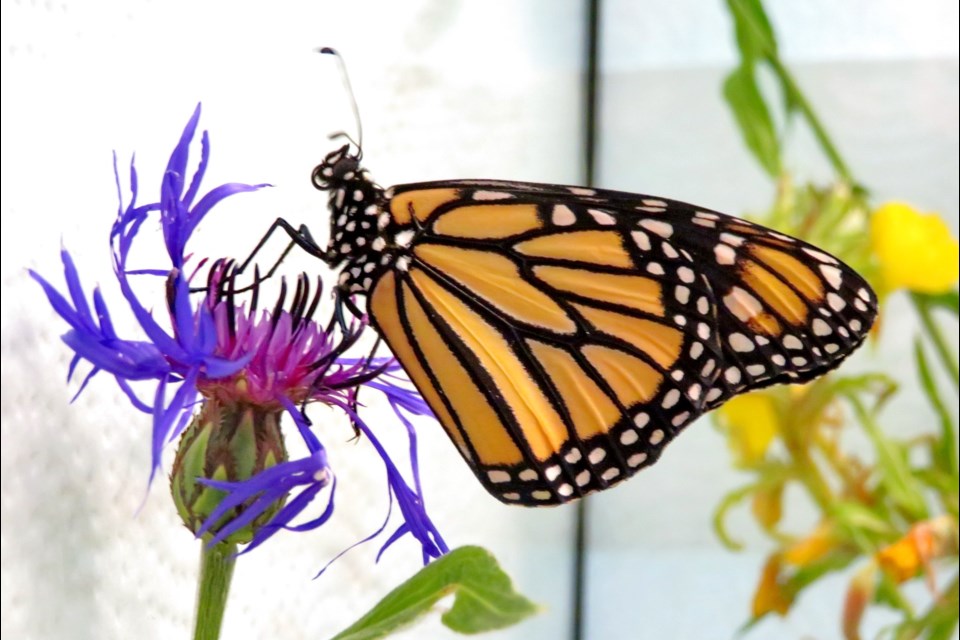Finally there is a warm sunny day in July for 2017. Temperatures up and activities abound. It is a day of tension and release.
A month ago there were clusters of eggs on the underside of the special plants that had been nurtured to establish themselves around the homestead.
A fascination with the life cycles of these unusual eggs prompted Shelly Haglund to build a dedicated insectarium to rear the hatchlings in safety and then release the adults.
It has been just over two years since this project started, and now the fruits of the labour are rewarding.
The outside milkweed plants had attracted adult monarchs over the years. They came to the known site and laid their eggs on the large elliptical leaves. In the natural environment there are many pressures on the monarch development.
Not all eggs will hatch and not all caterpillars will survive as there are a host of predators, parasites, diseases and weather conditions to contend with.
Shelly wants to increase the success rate of her local monarchs. They are getting scarce on a national scale so any form of useful assistance will help. Her insectarium seems to do the trick on a small, local level.
Eggs were collected about a month ago and transferred into chambers of hand- made wooden frame and mesh cloth. Fresh food in the form of milkweed leaves were hand selected and provided for the young from the hatched eggs.
At first, things were going great. The synchronised hatching means that the development of the young should be at about the same pace; like having twins. Unfortunately some young were bigger and ate smaller larvae accidentally while eating the leaves. A separation of space was in order to allow for better survival.
The caterpillars quickly grew, changing in size by shedding their skins; stages that are called instars. Eventually they got to about five centimeters and it was time to form a chrysalis. This is the next stage in their metamorphosis.
The tops of the chambers seemed like a good spot to hang from. Chrysalids are beautiful green chambers in which the caterpillar will transform its body into a butterfly. Along the outside of the chrysalids are a series of bead like jewels that glisten in the light.
It is the big day. Some 48 brightly coloured orange and black patterned butterflies are in need of release. They are checked for a monarch disease called OE (Ophryocystis elektroscirrha) by a quick spore collection technique which is sent off to a lab in the states.
So far the results have been good. The containers are then carried to the outside so that the butterflies have a chance to disperse.
Friends arrive to share in the experience. Lids removed the butterflies slowly make their way to freedom. Some land on daughter Catherine’s hand and another lands on Shelly’s head as though to thank her for the free grub. No pun intended!
It has been a rewarding season. The population of milkweed plants have become very well established near Shelly’s home so that a life cycle of monarchs can be completed. A large number of butterflies were successfully released.
Some might eventually make their way down towards the mid states and eventually some generations might reach Mexico where they over winter as adults. In the spring the northward migration would start again. In Sudbury the first monarchs are seen around June.
Chris Blomme is an executive member of the Sudbury Ornithological Society and works with animals at Laurentian University. Have a question for Chris? Send it to [email protected].
